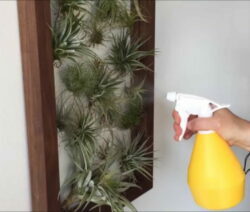Conjure up small, green oases on gray walls! Tillandsia do not need soil and are ideal for greening the walls in homes and offices.
Hardly any other color can lighten the mood like a lush, happy green. Unfortunately, boring white or gray dominates most house walls. However, there is a remedy that can bring green living to your walls at home or in the office as well, with little effort. The magic word is Tillandsia. These are so-called air plants that originally come from the south of the USA and South America. Over time, these plants have adapted to a wide variety of habitats. Tillandsias are not particularly fussy about their growth substrate. Mostly they grow on trees or cacti, but they also settle on rocks, house roofs or even on telephone poles. Due to their robust way of life, they are particularly suitable as lively wall decorations. And the plants are also easy to care for: they only need to be sprayed with water two to three times a week.
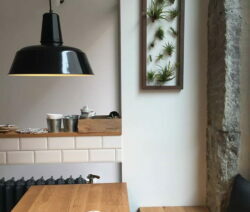

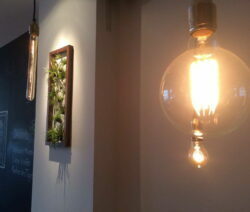
What you need for this naturally green wall decoration made of Tillandsia and instructions on how to get the plants on the wall can be found here:
Required materials:
- 25-30 nails
- 10 screws
- Fishing line
- Hard wax oil
- 2 wooden picture frames with a smooth surface
Required tools:
- hammer
- Cordless screwdriver
- Brush or paint roller
1. Buy picture frames or make them yourself
Our picture frames have the dimensions 90x30x2cm with a flat surface so that they can later be screwed together flush. Of course, you can easily make the frames yourself. To do this, two wooden strips each have to be cut to 90cm and 30cm lengths for a frame. Then cut the ends at a 45 ° angle and smooth the surfaces with sandpaper. Now the frame can be assembled. To do this, we stapled the 45 ° edges together. So that no cracks appear when the two frames are joined, holes for the screws should be pre-drilled now. Three holes should be sufficient on the long sides and two holes on the short sides. The holes in the frame, which will later form the back, are completely drilled through. The holes in the front frame, on the other hand, are only slightly drilled.

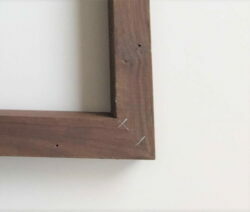

2. Coat the frame with hard wax oil
The next step is to prepare the two picture frames for frequent spraying with water. For this they are coated with hard wax oil and then left to dry overnight. This should be repeated twice more so that the frames are really water resistant too.
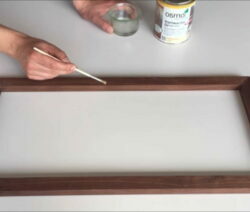
3. Attach the holder for the tillandsia
For the net on which the tillandsia will grow later, nails are cut into approx. 5cm intervals attached. Caution! Do not drive in the nails completely yet, but approx. Leave 1cm sticking out so that the fishing line can be attached to it.
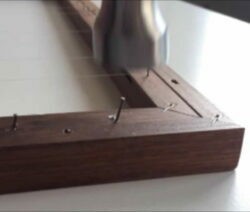
4. Put up the support net for tillandsia
For the support net, attach the fishing line to one of the nails in the corner with a knot. This can be done with a loom loom (see video: https://www.youtube.com/watch? v = FgEqqlRjWE0 ) are additionally secured. Then fasten the fishing line to the opposite nail again with a laid loom. Now tie the fishing line to the next nail on the side with a loom and then continue on the opposite side. This is repeated until the fishing line is stretched over the entire edge. Now the same thing is done again on the not yet covered edge. You should make sure that the fishing line is threaded alternately above and below the already stretched fishing line (similar to a tennis racket). This gives the plants a better hold later. The nails can then be hammered in completely.
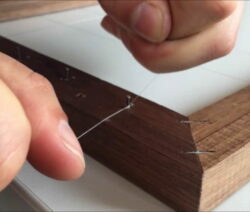

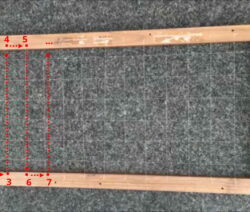
5. Screw the frames together
Now the two frames can be screwed together. To do this, the two frames are placed on top of one another. It should be noted that the fishing line net should now lie between the two frames. Now attach the screws to the pre-drilled holes and screw the two frames together.
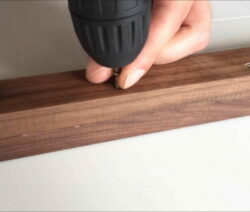
6. Hang up the frame and insert plants
Hang the finished frame with a dowel and screw (alternatively also nails) on the desired wall. Now the tillandsia can be used. Simply clamp the plants between the fishing lines.

7. Enjoy wall decoration
The plants need some water every two to three days. To do this, simply spray the tillandsia with a spray bottle. Then there is nothing else to do than enjoy the little plants.
